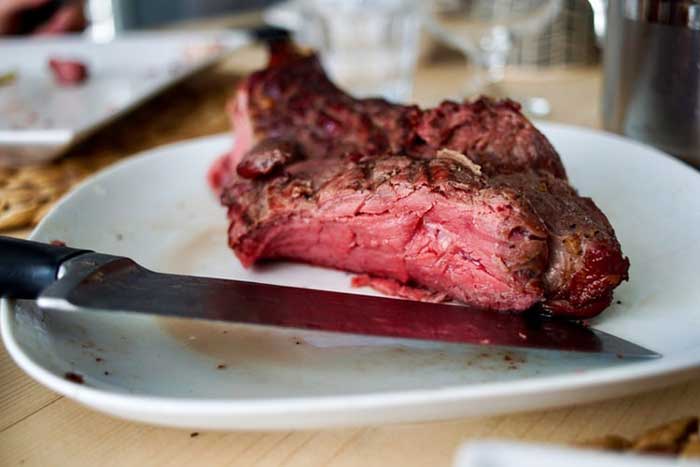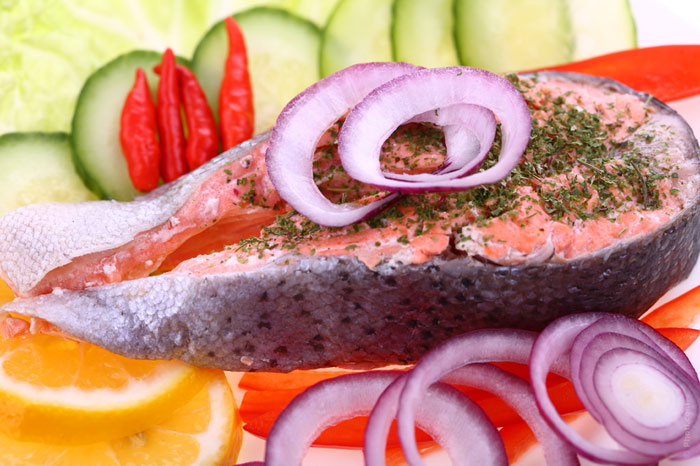Food fears are a common problem and have an extremely negative impact on the quality of life. What food phobias exist and how to deal with them? Read on about the weirdest food phobias!

Cibophobia
Let’s start with the most global phobia – the fear of food. It is often confused with anorexia, but these are two completely different things: people suffering from anorexia are “afraid” of food, as it can harm their figure and spoil it. Yet those who have cibophobia are terribly afraid to eat, not because of the desire to keep weight under control, but because they are afraid of dying.
A phobia can develop in childhood, when a child, for example, choked on some product, and his psyche formed an attitude: food is evil, it can harm. After eating, a person feels sick, a frequent and uneven heartbeat begins, at the thought of food he sweats, feels anxiety, nervousness, dizziness and even disorientation in space. In other words, he starts a panic attack.
This phobia should be taken very seriously, because without food we cannot exist. Avoiding a particular food that causes fear is one thing, but avoiding food completely can lead to extremely negative consequences, including serious illnesses and even death.
Therefore, if you have such a phobia, you should definitely contact a psychotherapist and be observed by a nutritionist at the same time – the joint efforts of specialists will help overcome this problem.
Mycophobia
You can be afraid of food in general, or you can be afraid of mushrooms – a person with mycophobia manifests a strong fear of being poisoned by this product. In this case, the causes of the phobia may be the following factors:
- Past experience – severe mushroom poisoning, which affected the further attitude to this product.
- It may seem that you can live with this phobia by trying to avoid the product that causes panic and fear, but not everything is so simple. Suppose at work a colleague, for example, ordered pizza or pasta with mushrooms. In that case, a person with mycophobia may begin a panic attack – with the symptoms already familiar to us (from dizziness to nausea).
- Having found mushrooms in the food eaten, a patient suffering from such a disorder may experience symptoms that appear with ordinary poisoning, even if the mushrooms were normal – vomiting, diarrhea, disruption of the central nervous system, fainting, weakness and fever.
This problem should also be solved with the help of specialists – competent therapy will help correct the situation.
Carnophobia

If you see a person who does not eat meat, it may not be a vegetarian, but a person suffering from the fear of meat. Just like the formation of other phobias, this fear can be caused by not the most pleasant memories from the past:
- In childhood or conscious age, a person sees how an animal was killed
- Severe poisoning after eating meat
- People severely cut themselves while cooking a meat dish
- The child was injured in the process of cutting meat.
Carnophobia manifests itself most often at the sight of raw meat with the following symptoms: nausea, fainting, panic attack. Fried meat, which is not cooked with blood, may not cause any negative emotions in a person suffering from this phobia – so not all people who have such a fear avoid meat dishes. However, such disorders still require intervention, as they are associated with psychological trauma and stress.
Lachanophobia
All of us did not really like broccoli and celery in childhood, but there are people who experience an irrational fear of all vegetables and fruits (rarely berries).
This mental disorder can also be the result of trauma received at an early age – for example, parents often pressured the child and forced him to eat vegetables, as a result of which the child began to hate any manifestation of vegetables and later, this hatred grew into fear.
The diet of a person suffering from this disorder may consist of grains, meat, fish and dairy products, but even a small piece of carrot, cucumber or cabbage can lead to a panic state.
Even if the usual food is on the same plate with vegetables or fruits, a person with lachanophobia will not eat it. The smells, texture, and taste of these foods all lead to increased sweating, palpitations, and panic attacks.
This phobia is easier to treat, thanks to psychologists. Without vegetables, our diet will not be as complete, even if we try to stick to a healthy diet, and therefore it is worthwhile to seek help from specialists quickly.
Ichthyophobia

In this case, it will not be entirely about fear, but rather about a squeamish attitude towards the entire category of fish. The unpleasant appearance of products, sharp scales, smell – all this can provoke disgust, which later transforms into a phobia.
The causes of the problem again lie in childhood. For example, one of the relatives brought fish after fishing and threw it into the bathroom. The fish may jump out of the water, frightening the kid, in addition, the child may be very impressed by the fact that the fish beats against the bathroom for a long time, trying to get out of it. Also, a person could severely choke on a fish bone while eating, and this experience caused a negative attitude towards the product.
With a competent approach to the treatment of this phobia, a psychologist can achieve the desired result – a person can get rid of fears and introduce fish into his diet (and even enjoy fish dishes without fainting at the sight of an aquarium).
Mageirocophobia
A person with this type of phobia will not get carried away with a cooking show, will not please their significant other with a delicious dinner and will not arrange a dinner party – the whole point is that they have a fear of cooking. It would seem that this phobia is not so dangerous, since modern reality offers a lot of options for the delivery of ready meals. However, not everything is so simple.
The fact is that people suffering from such a phobia cannot cook at all – this applies to breakfast, preparing simple meals for snacks, and drinks. Of course, you can order ready-made food kits, but not everyone has the financial opportunity to solve a global problem in this way.
Quite often, mageirokophobia occurs among perfectionists who love a beautiful presentation, the correct design of the dish and the right combination of ingredients. In addition, the reasons include the following:
- The fear that a person can poison those for whom she cooks
- The fear of making a negative impression on others if the dish fails
- The fear of not conforming to a particular social status. For example, the imposed attitude that a good wife and mother should prepare a variety of delicious meals for the whole family every day can cause stress and panic, which ultimately leads to the emergence of such a phobia.
- Concern about the inconsistency of a real dish prepared by a person with the image that they imagined (for example, with a photo from the Internet or a cookbook)
This phobia can also be dealt with due to a psychologist – starting to cook elementary dishes, a person will gradually adapt to the cooking process.
In this case, constant monitoring is very important. For example, a sandwich that has fallen butter down can greatly aggravate the situation, and a burnt onion in a frying pan will again return a person to the peak of a panic state.
It is important to understand that, in general, a person can adjust their diet in such a way as to avoid foods that cause fear. However, any phobia is a serious psychological problem that requires intervention. Therefore you should not escape your fears – try to work through them and return harmony and joy to life.










